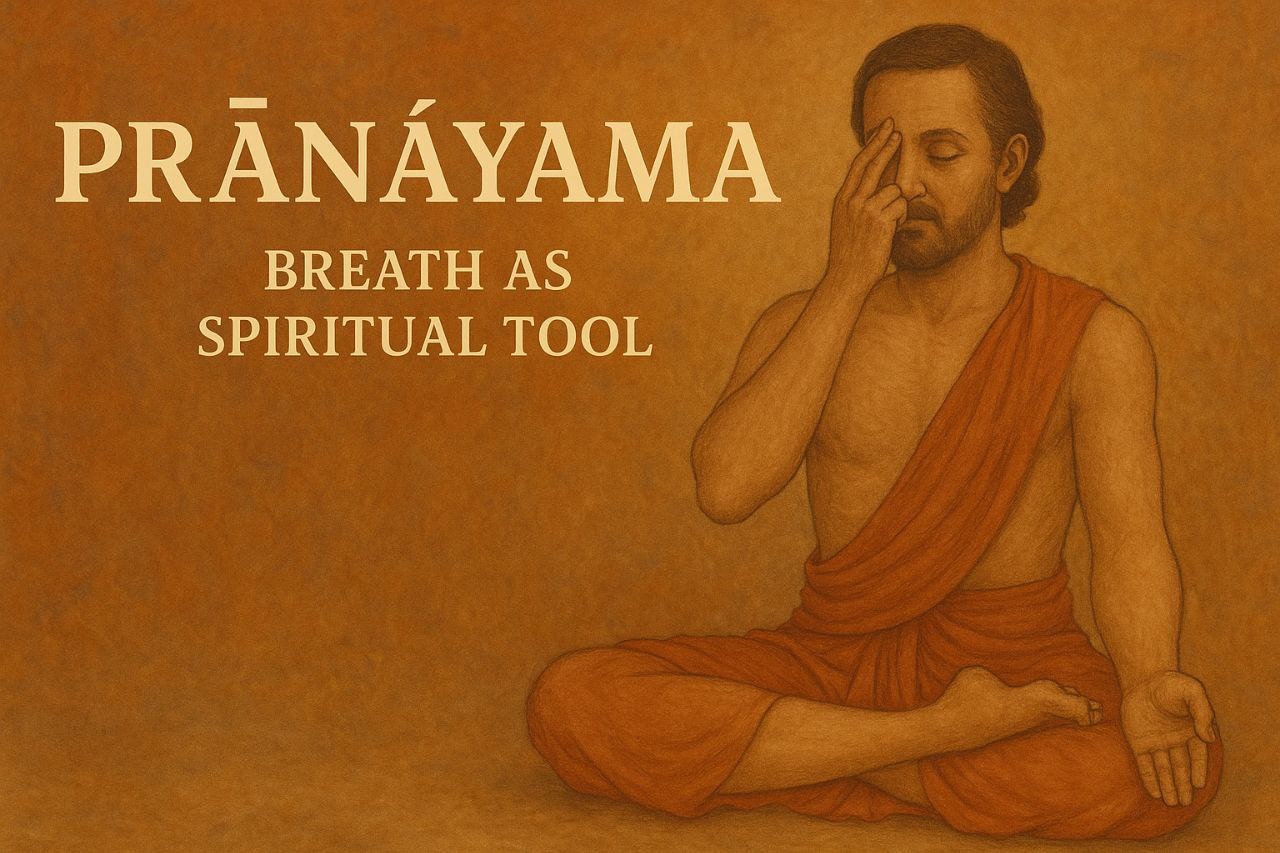Prāṇāyāma ~ Breath as Spiritual Tool

Across the timeless stream of Sanatan Dharma, consciousness and breath (prāṇa) are inseparably linked. Prāṇāyāma, the science of breath control, is not just a yogic practice; it is a spiritual technology that harmonizes the body, mind, and thread of awareness.
“Breath is the bridge between the physical and the divine, through prāṇāyāma we cross into the infinite.” ~ Adarsh Singh
🌬️ What Is Prāṇāyāma?
Derived from Sanskrit roots ‘prāṇa’ (life force) and ‘āyāma’ (extension or control), Prāṇāyāma is the intentional regulation of breath to influence the flow of vital energy. It is a pathway from instinctual survival to conscious sovereignty.
Through the artful use of inhalation (puraka), retention (kumbhaka), and exhalation (rechaka), one learns to direct the currents of prāṇa toward harmony, clarity
🔁 The Four Pillars of Breath Practice
1. Puraka ~ Inhale consciously, invoking awareness and freshness.
2. Kumbhaka ~ Hold the breath with presence, cultivating stillness and focus.
3. Rechaka ~ Exhale with intention, releasing tension and impurities.
4. Antar Kumbhaka ~ Subtle breath retention, where silence itself becomes the teacher.
With each phase, the practitioner turns outward distractions inward, revealing the field of silent consciousness beneath the waves of activity.
✨ Effects on Body, Mind & Spirit
Physiological: Slows the nervous system, supports organ function, and improves vitality.
Psychological: Clears mental fog, reduces stress, and stabilizes emotions.
Spiritual: Deepens meditative states, awakens intuitive clarity, and aligns with higher awareness.
“When breath becomes still, the mind becomes quiet. In that stillness, the Self speaks.” ~ Adarsh Singh
🕉️ Prāṇāyāma in Sanatan Tradition
Prāṇāyāma is a core element of Patanjali’s Eight Limbs of Yoga, placed before Dhyāna (meditation) and Samādhi (absorption). The Hatha Yoga Pradīpikā elevates breath mastery as a tool for awakening spiritual energy (Kundalini).
In the Upanishads, prāṇa is considered the subtle link between the changing body-mind complex and the unchanging Atman. Controlling breath is thus controlling attention, and navigating the path toward Self-realization.
⚙️ Key Techniques for Practice
Sūrya Bhedana: Inhale through the right nostril, activate energizing prana.
Chandra Bhedana: Inhale through the left nostril, invoke calming prana.
Nādī Śodhana (Alternate Nostril): Balances Ida and Pingala currents, creates centeredness.
Kapalabhāti: Skull-shining breath to energize and purify.
Bhramari: The humming bee breath; calms the nervous system and fosters internal vibration.
Regardless of the technique, breath should remain smooth, steady, and aligned with awareness.
💫 Modern Relevance
In an age of overstimulation, Prāṇāyāma offers a way to:
Anchor attention through rhythmic presence
Build resilience against stress and trauma
Access deep states of clarity in minutes
Reconnect with a subtler dimension of being
It is spiritual practice and mental hygiene, both in one.
“In a noisy world, your breath is the sanctuary. In just a few conscious breaths, you return to presence.” ~ Adarsh Singh
Prāṇāyāma is not a ritual, it’s a revolution. It transforms breath into silence, activity into stillness, and fragmentation into wholeness. It is the thread that weaves the finite body into the infinite tapestry of consciousness.
“Prana is not in you, you are in Prana. When breath is mastered, breath dissolves, and you awaken to what was always here.” ~ Adarsh Singh
Wed Jul 23, 2025
